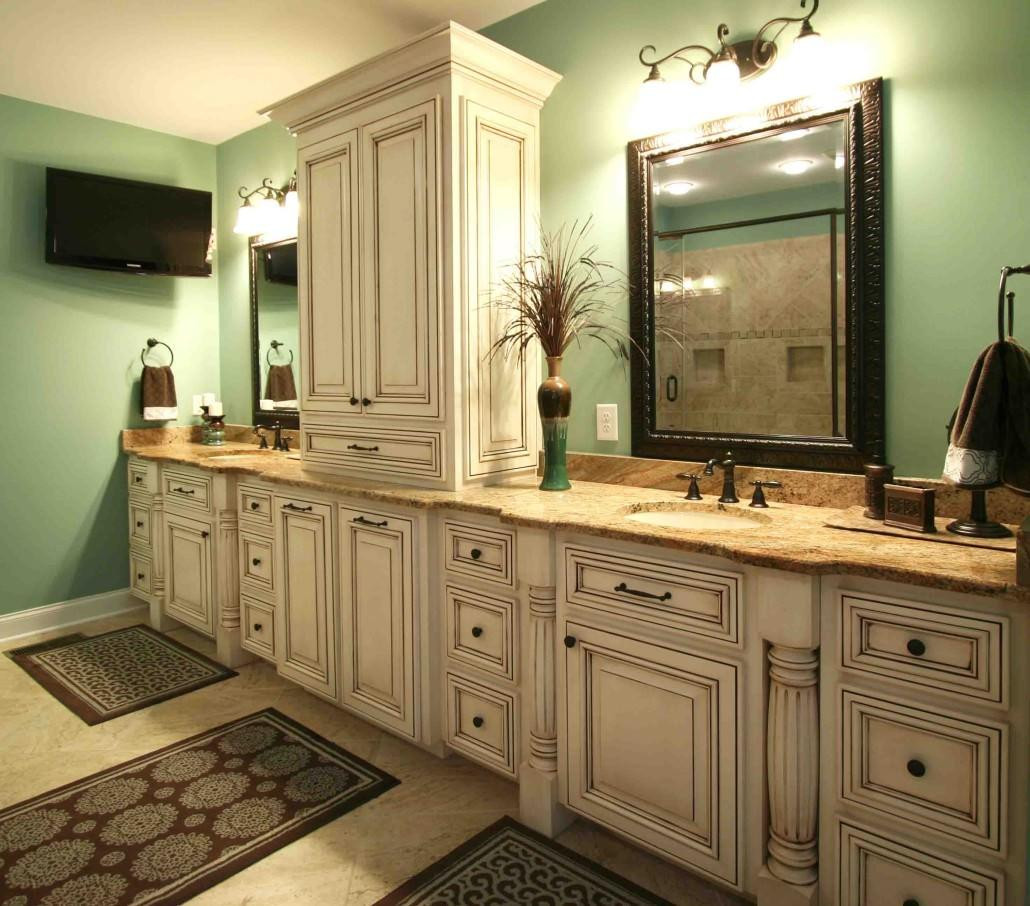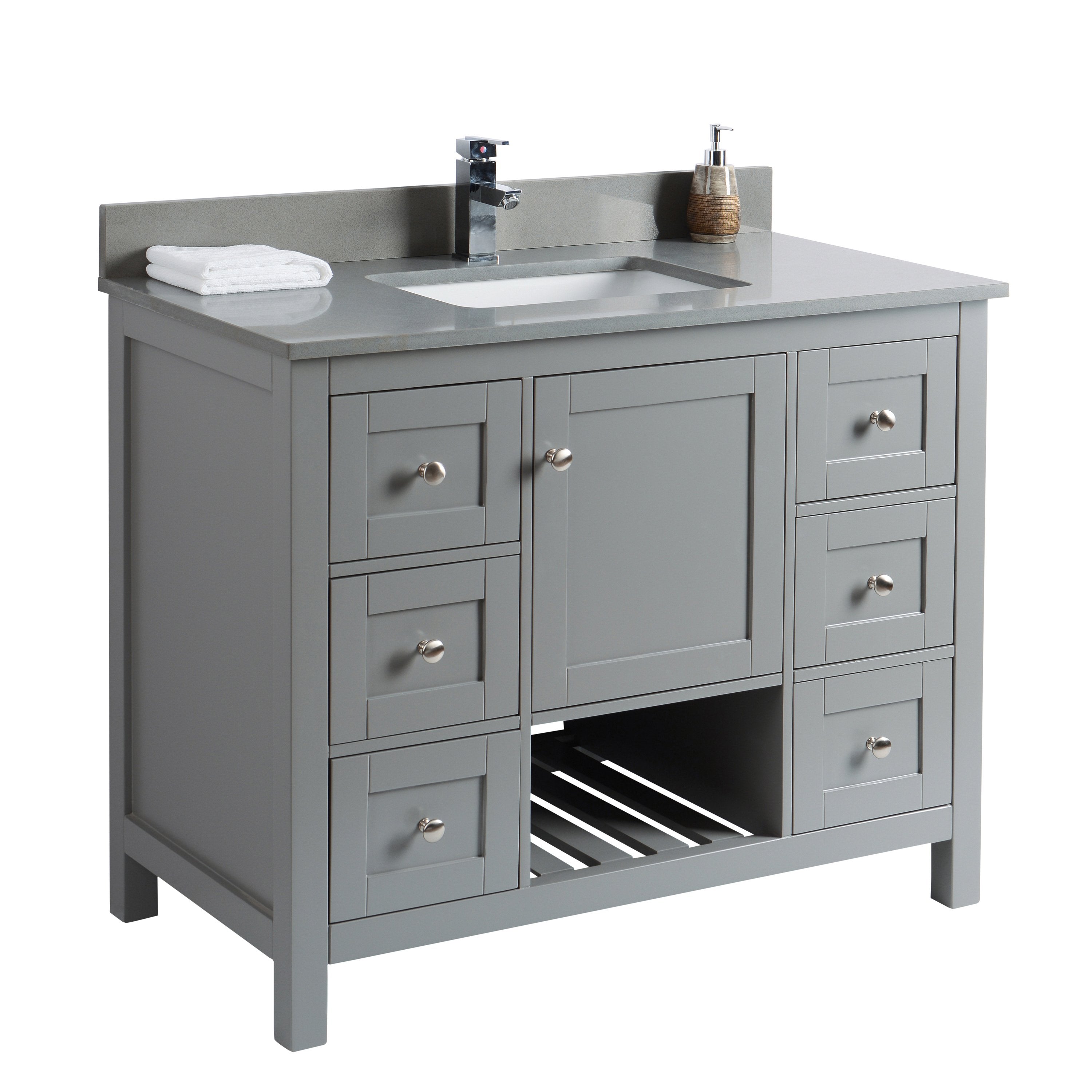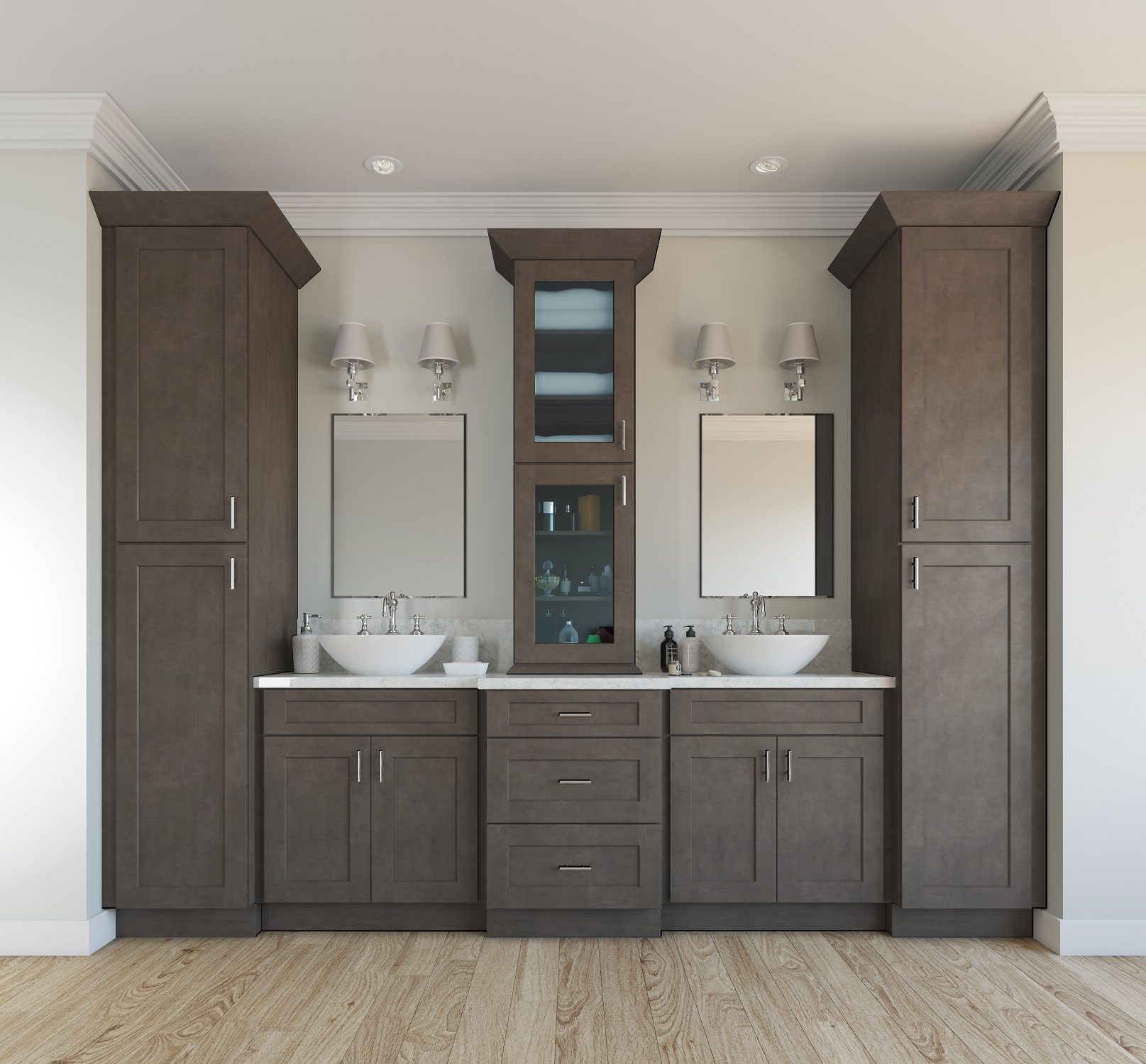Understanding 24-Inch Bathroom Vanity Cabinets

Let’s talk about the humble, yet mighty, 24-inch bathroom vanity cabinet. It might be small, but it packs a punch when it comes to functionality and style in your bathroom. Think of it as the unsung hero of your bathroom remodel – a space-saving champion that can make a big difference in your daily routine.
The Purpose and Functionality of a 24-Inch Bathroom Vanity Cabinet
A 24-inch bathroom vanity cabinet is a compact solution for smaller bathrooms or powder rooms. Its compact size makes it ideal for tight spaces, while still offering ample storage for your bathroom essentials. It’s perfect for a quick touch-up before heading out or for storing your daily necessities. Think of it as a mini-spa, tucked away in a corner of your bathroom.
Typical Features and Design Elements, 24 bath vanity cabinets
24-inch bathroom vanity cabinets come in a variety of styles and features, catering to different tastes and needs. Here’s a rundown of some common features:
- Single or Double Sinks: While most 24-inch vanities come with a single sink, you can find some models with a double sink, perfect for couples or those who need extra space.
- Storage Options: These vanities often feature drawers, shelves, or a combination of both. This allows you to neatly organize your toiletries, towels, and other bathroom essentials.
- Cabinet Styles: You’ll find a wide range of cabinet styles, from traditional to modern, to match your bathroom’s décor. Think shaker, farmhouse, or contemporary.
- Countertop Materials: From durable laminate to elegant granite, you have a variety of countertop options to complement your style and budget.
Materials Used in Manufacturing
The materials used to build a 24-inch bathroom vanity cabinet can significantly impact its durability, style, and price. Here’s a breakdown of common materials:
Cabinet Construction
- Wood: Solid wood cabinets are known for their durability and timeless appeal. They can be crafted from various hardwoods, such as oak, maple, cherry, or walnut, offering different grain patterns and colors. Solid wood cabinets are often more expensive, but they are built to last.
- Plywood: Plywood is a strong and stable material, often used in cabinet construction. It’s a more affordable option than solid wood and is known for its resistance to warping and cracking. Plywood cabinets can be painted or stained to match your bathroom’s style.
- Medium-Density Fiberboard (MDF): MDF is a engineered wood product that is smooth, dense, and relatively inexpensive. It’s often used in vanity construction, especially for cabinets with intricate details or curved designs. While MDF is durable, it can be susceptible to moisture damage, so it’s important to choose a cabinet with a moisture-resistant finish.
Countertop Materials
- Laminate: Laminate countertops are affordable, durable, and easy to maintain. They come in a wide range of colors and patterns, mimicking the look of natural stone or wood. Laminate is a great option for those on a budget, but it may not be as resistant to scratches and heat as other materials.
- Granite: Granite countertops are known for their elegance and durability. They are naturally resistant to scratches, heat, and stains, making them a popular choice for high-traffic areas. Granite comes in a wide range of colors and patterns, adding a touch of luxury to your bathroom. However, granite is a more expensive option than laminate.
- Quartz: Quartz countertops are a popular alternative to granite. They are engineered to be non-porous and stain-resistant, making them easy to clean. Quartz comes in a variety of colors and patterns, and it’s often more affordable than granite.
- Marble: Marble countertops are known for their timeless beauty and elegance. They are a natural stone with a unique veining pattern, adding a touch of sophistication to your bathroom. However, marble is porous and susceptible to staining, so it requires regular sealing. Marble is also a more expensive option than laminate or quartz.
Pros and Cons of Countertop Materials
Countertop materials play a significant role in the overall look and feel of your bathroom vanity. Here’s a comparison of the pros and cons of some common countertop materials:
| Material | Pros | Cons |
|---|---|---|
| Laminate | Affordable, durable, easy to maintain, wide range of colors and patterns | May not be as resistant to scratches and heat as other materials |
| Granite | Elegant, durable, resistant to scratches, heat, and stains, wide range of colors and patterns | More expensive than laminate, can be heavy, requires sealing |
| Quartz | Non-porous, stain-resistant, easy to clean, wide range of colors and patterns, more affordable than granite | Can be susceptible to scratches, may not have the same natural beauty as granite or marble |
| Marble | Timeless beauty, elegant, unique veining patterns | Porous and susceptible to staining, requires regular sealing, more expensive than laminate or quartz |
Choosing the Right 24-Inch Vanity for Your Bathroom

Let’s face it, your bathroom vanity is the star of the show, the heartthrob of your hygiene haven. It’s where you get ready for your day, where you reflect on life’s triumphs (or the occasional bad hair day), and where you store all your beauty secrets. So choosing the right one is crucial, especially if you’re working with a smaller space.
Understanding Space Constraints
A 24-inch vanity is perfect for small bathrooms, but even in a small space, you need to measure twice and cut once (or, in this case, buy once!). Measure the width of your bathroom, consider any existing fixtures, and don’t forget about the door swing. You don’t want to end up with a vanity that’s too big for your space, or worse, one that blocks the door!
Assessing Storage Needs
Before you get swept away by the sleekest, most stylish vanity on the market, think about your storage needs. Do you need a ton of drawers for all your lotions and potions? Or maybe you’re a minimalist who just wants a simple shelf for a few essentials? A 24-inch vanity can offer surprisingly good storage options, with drawers, shelves, and even built-in organizers.
Exploring Different Vanity Styles
Now for the fun part: picking the style! 24-inch vanities come in a variety of styles, each with its own unique charm:
- Single Sink: The classic choice for small bathrooms, a single sink vanity offers ample counter space and a compact footprint.
- Double Sink: For couples or families who need a little more space, a double sink vanity can be a great option, but make sure you have the room! You’ll need at least 48 inches of width to accommodate two sinks comfortably.
- Freestanding: These vanities are perfect for adding a touch of elegance to your bathroom. They can be placed anywhere in the room, making them a great choice for small spaces where you want to create a focal point.
Designing a 24-Inch Vanity for a Small, Modern Bathroom
Let’s imagine a small, modern bathroom with a minimalist aesthetic. For this space, we’ll envision a 24-inch vanity with a sleek, contemporary design. The vanity will be crafted from durable white laminate with brushed nickel hardware. It will feature a single, rectangular sink and a large drawer for storage. Above the vanity, we’ll install a rectangular mirror with a thin, black frame. The entire look will be clean, streamlined, and perfect for a modern bathroom.
Installation and Maintenance of 24-Inch Vanity Cabinets: 24 Bath Vanity Cabinets

Installing a 24-inch bathroom vanity cabinet might seem like a daunting task, but it’s actually a project that even a moderately skilled DIYer can tackle. With the right tools, a bit of patience, and maybe a friend to lend a hand, you’ll be enjoying your new vanity in no time.
Installing a 24-Inch Vanity Cabinet
Let’s get down to the nitty-gritty of installing your new 24-inch bathroom vanity cabinet. Here’s a step-by-step guide to help you through the process:
- Preparation is key. Before you even think about picking up a screwdriver, make sure you have all the necessary tools and materials. This includes a level, measuring tape, stud finder, drill, screwdriver, saw, plumbing tools, and any required hardware.
- Location, location, location. Choose the perfect spot for your vanity. Ensure it’s level, and that there’s adequate space for the door to swing open and for plumbing connections.
- Remove the old vanity. If you’re replacing an existing vanity, carefully disconnect the plumbing and remove the old unit.
- Prepare the wall. Clean the wall where the new vanity will be mounted. If necessary, patch any holes or imperfections.
- Install the vanity base. Center the vanity base against the wall and mark the mounting points. Use a stud finder to locate wall studs for secure installation.
- Secure the vanity. Drill pilot holes and attach the vanity base to the wall using appropriate screws.
- Connect the plumbing. Connect the plumbing lines to the vanity’s drain and water supply.
- Install the countertop. If your vanity comes with a countertop, follow the manufacturer’s instructions for installation.
- Finish up. Install the vanity’s hardware, such as the faucet, handles, and mirrors.
Connecting Plumbing Fixtures
Connecting the plumbing fixtures to your 24-inch vanity is a crucial step that requires a bit of care and precision. Here’s how to do it right:
- Shut off the water supply. Before you start messing around with pipes, turn off the water supply to your bathroom.
- Connect the water supply lines. Attach the water supply lines to the faucet’s inlets. Ensure the connections are secure and leak-proof.
- Connect the drain. Attach the drainpipe to the vanity’s drain outlet. Make sure the connection is tight and secure.
- Test for leaks. Turn the water supply back on and carefully check all connections for leaks. If you find any, tighten the connections or use pipe sealant to fix the leak.
Maintaining Your 24-Inch Vanity Cabinet
You’ve gone through the trouble of installing your 24-inch vanity, so you want to make sure it stays in tip-top shape for years to come. Here’s a handy checklist to keep your vanity looking its best:
- Clean regularly. Wipe down the countertop and cabinet surfaces with a damp cloth and mild cleaner. Avoid harsh chemicals that can damage the finish.
- Keep the sink clean. Clean the sink regularly to prevent buildup of soap scum and grime.
- Check for leaks. Regularly check for leaks around the faucet, drain, and water supply lines.
- Tighten loose screws. Periodically check for loose screws and tighten them as needed.
- Replace worn-out parts. If any parts, such as the faucet or handles, show signs of wear, replace them promptly.
Cleaning Countertop Materials
The countertop is a prominent feature of your 24-inch vanity, so keeping it clean and pristine is essential. Here’s how to care for different countertop materials:
- Granite: Granite is known for its durability and beauty. To clean granite countertops, use a mild soap and water solution. Avoid using harsh cleaners or abrasive scrubbers.
- Quartz: Quartz countertops are non-porous and easy to maintain. Clean them with a mild soap and water solution.
- Marble: Marble is a beautiful but delicate material. Clean marble countertops with a pH-neutral cleaner. Avoid acidic cleaners, as they can damage the surface.
- Laminate: Laminate countertops are budget-friendly and easy to clean. Use a mild soap and water solution. Avoid using abrasive cleaners.
24 bath vanity cabinets – A 24-inch bath vanity cabinet is a great choice for smaller bathrooms, providing ample storage without overwhelming the space. But what about the finishing touches? A well-chosen industrial bathroom medicine cabinet can add a touch of rugged elegance, complementing the vanity and adding a functional storage solution for toiletries and medications.
When selecting a vanity cabinet, remember that its style should harmonize with the overall bathroom design, and an industrial medicine cabinet can be the perfect way to tie everything together.
24-inch bath vanity cabinets are a popular choice for smaller bathrooms, offering ample storage without overwhelming the space. If you’re looking to add a touch of rustic charm to your bathroom, you might consider distressing your vanity cabinets. There are a variety of techniques you can use to achieve the desired look, from sanding to paint chipping.
Check out this guide on how to distress bathroom cabinets for a step-by-step process. Once distressed, your 24-inch vanity will become a unique focal point in your bathroom, adding character and warmth to the space.
